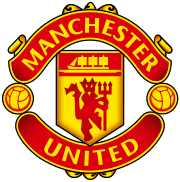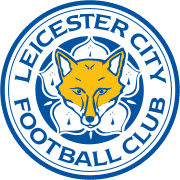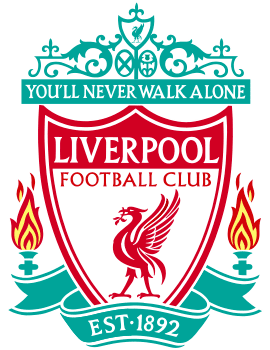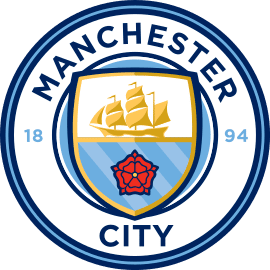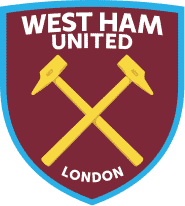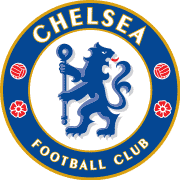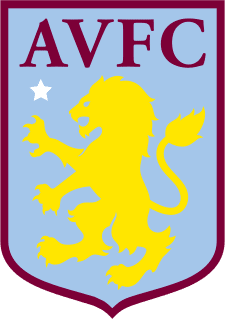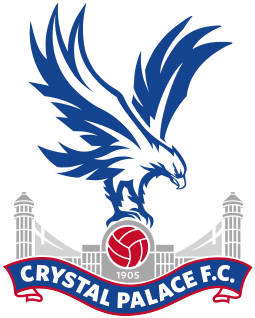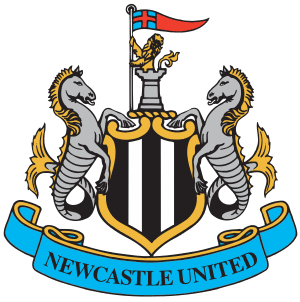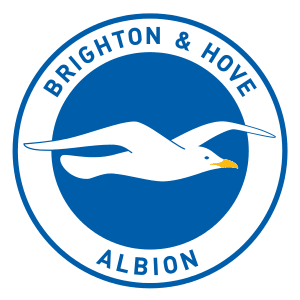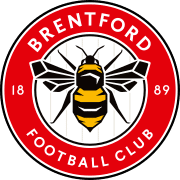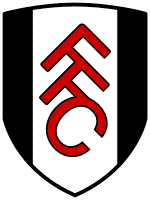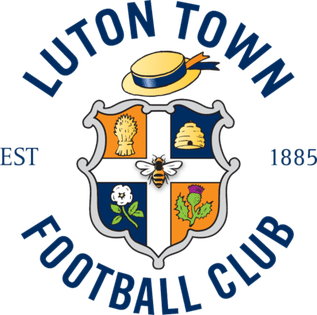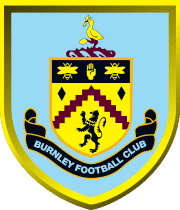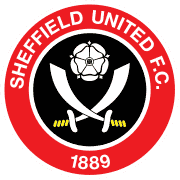Tottenham Hotspur FC Tryouts & Club Guide: History, Stadium, Players, and More!

Welcome!
Discover the world of soccer with fcscout.com, your go-to scout for club tryout information, club guides, player profiles, in-depth product reviews, and more. We’re dedicated to exploring and revealing the best in each domain, empowering you with knowledge to make informed choices.
Thank you for being here!
Hi, I’m Carlos! A coach, sports enthusiast, and the founder of FCScout.com.
I fell in love with the game at a very young age like many of you. I’ve been following and playing soccer for many years.
Throughout my career, I always enjoyed helping soccer players chase their dreams, which is why I started this website. I wanted to reach a larger audience outside of my local area and fcscout.com was born.
This website is a platform I will be using to update club pages on any tryouts, stadiums, players, tech, and more from clubs around the world. I also create free recruitment profiles for players looking to have that extra competitive edge when reaching out to clubs.
That’s it. That’s my pitch for you to stick around (or browse the site as you please).
This is already too much text for a “see more” drop-down button thing. If you want to reach out to me, head on over to my contact page 🙂

Tottenham Hotspur Football Club, commonly referred to as Tottenham or Spurs, is an English professional football club in Tottenham, London. The club competes in the Premier League, the top flight of English football.
Tottenham Hotspur Youth Development System
Tottenham Hotspur Football Club Academy develops talented young footballers from the age of eight to 23 years. Following the implementation of the Premier League Elite Player Performance Plan and our Audit by Double Pass Ltd we were awarded Category One status. The Academy employs a large team of staff to identify, recruit, coach, develop and support approximately 205 talented young players.

Tottenham Hotspur Academy Mission
To create an elite environment that attracts, retains and develops top quality players providing an ongoing supply of academy graduates to the First Team squad, whilst ensuring those individuals who fall short of this standard have the necessary skills and education to enable them to achieve success either at another football club or in a vocational career.
The Academy players in the Professional Development phase are full-time and are registered on Scholarship contracts, as part of their all-round education the players complete an academic education programme alongside their football commitments. Our players in the Youth Development phase combine their club training programme with attendance at their own school, this involves training evenings, weekends and during day release. The Foundation phase squads training programmes take place after school and at weekends.

The Academy education programme is in place and encourages each player to reach his full potential as he passes through the development phases. This education provision is designed to be flexible and to provide support for each player to achieve whilst remaining in their school of preference. It includes both formal and informal education which reinforces the high expectations of the Academy in relation to the ‘Tottenham Hotspur Standard’ of: Team Spirit; Friendship; Excellence; Elite Player Conduct; Co-operation; Effort and Persistence and Respect, and encompasses our holistic approach.
The Academy squads participate in the Premier League games programme along with a number of National, European and Worldwide tournaments.
Tottenham Hotspur Academy Development Centers
Tottenham Hotspur is passionate about football and youth development. Our Development Centers are generally aimed at boys aged 10 and under.
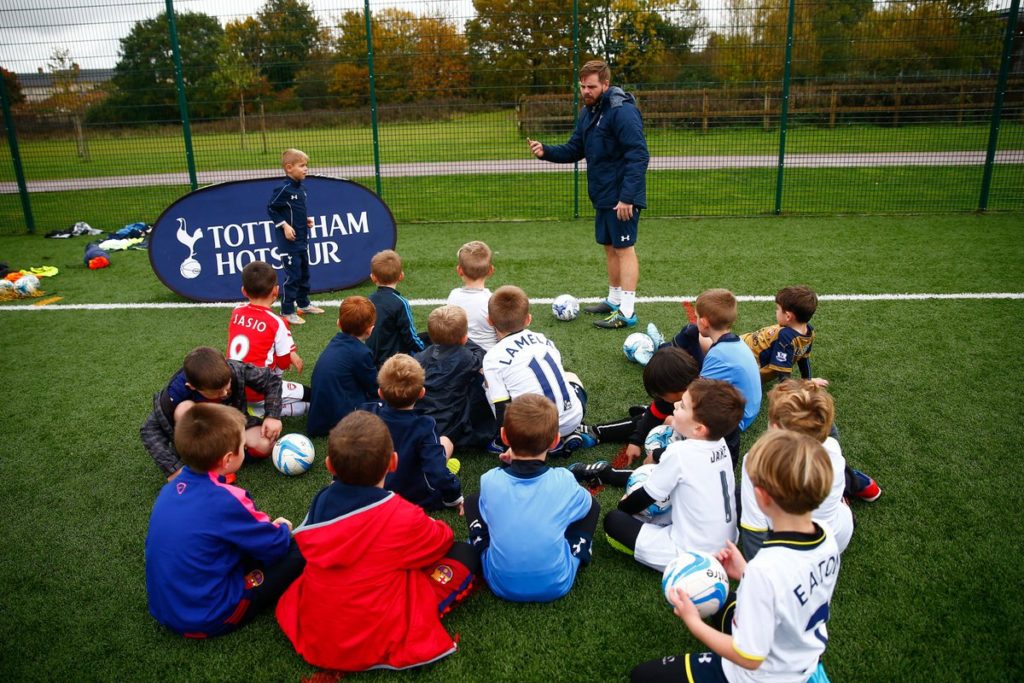
We endeavor to create a fun environment within the boundaries of discipline that allows the boys to demonstrate flair and individualism without fear of criticism.
Philosophy
Our ethos is to recruit the best potential which can be developed by the best coaches, working in the best facilities, underpinned by the best holistic support.
The Development Centers provide young footballers an opportunity and a pathway to professional football.
Identifying Young Talent
We aim to identify and recruit young talent through the Academy’s extensive scouting network. This means that if one of our staff identifies a talented player, the boy (via the parent/carer) will be invited to attend one of the Development Centers on a trial basis in order to assess him.
A scout will provide you with his/her business card. Please email your name, your son’s name and your contact details to the contact details on the scout’s card.
Development Center Information
Development Centers are within one hour’s travel of the Club. Each Centre is staffed by FA qualified coaches and the sessions last between one and one and a half hours in the evening during the week. Boys need to wear suitable clothing and footwear. Attendance is strictly by invitation only for players and their parents/carers.
About Talent Identification Scouts
Academy scouts are registered with the Premier League and have been CRB checked. The Academy carries out regular training to ensure our scouts are up-to-date with all the processes and procedures we operate.
Academy scouts are employed by Tottenham Hotspur and are bound by the rules of the Premier League and The Football League which means that they must conduct themselves in an ethical and professional manner, and observe the highest standards of integrity and fair dealing.
How Academy Scouts Contact You
A scout will talk with the parents/managers and/or teachers of a player.
We do not approach children directly and we DO NOT ASK FOR MONEY.
If you are approached by an Academy scout and wish to verify his identity, please contact the Academy via email on.
We give you this reassuring information because we are aware that there are people who look to exploit the hopes of young players wanting to join a football club like Tottenham Hotspur.
Therefore, we want to warn and advise players and their families to prevent them being exploited for financial gain or other motivations.
To learn more about the Development Centers, please click here.
Tottenham Hotspur Academy Trials
How does recruitment work at Tottenham Hotspur Academy?
We have a network of scouts who work for the Club on a local, national and international basis. They look for players predominantly from Under-7s to Under-16s (the higher up the age groups, the less likely it becomes to be offered a trial – but it is by no means impossible). Once they identify a player, they recommend them to the Academy Recruitment Department, which then decides whether to proceed with the recommendation.
Do you run open trials, and how do I get a trial?
We do not hold open trials. We always watch players at their local clubs or schools before inviting them for a trial. Therefore, if you write in for a trial, you should always include a fixture list with kick-off times and venues for your team. You should also write a CV to tell us about your football background, including information such as date of birth, playing position, clubs previously played for and any representative honours such as those attained with school, district or county teams. Letters of reference and recommendation can help to support an application. We are only able to trial players with an EU passport, or who have ‘leave to remain’ documentation.
How do I know if a scout has been to watch me?
Unfortunately, you may never know. Our scouts are not always in club kit as the presence of a scout may put unnecessary pressure on the players, making them very nervous (this is especially true of younger players) or try much harder just because they think someone is watching them. You will only know if we make contact via your current club – we will always approach your coach or manager before making contact with a player’s parents.
What are we looking for?
Quite simply; talent. We understand that players come in all shapes and sizes, with a variety of strengths and weaknesses. We take into account a player’s technical, tactical, physical, psychological and social attributes, as well as looking at relative age effect and maturation rates. We also have to compare them to players currently in the Academy to assess whether a target player has the potential (we understand this may take time) to be better than the players we already have registered.
I keep contacting clubs, but never seem to get invited in. What can I do to get scouted?
Football is a hugely competitive profession in which to ‘make it’. Obviously talent is required, but it takes real resilience and determination to be successful in the game. Some people are noticed early on, and others develop later, so keep working hard, and keep emailing clubs at a variety of levels.
The higher the level you are currently playing at, the more likely you are to be noticed, so even if you don’t get a trial at Tottenham Hotspur, look to move up the leagues at whatever level you can. Don’t lose heart, and however far you get, do it for the enjoyment of the game – professional recognition is an obvious bonus, but a love of the game will give you satisfaction whatever the outcome!
Please email your information to [email protected]. Please remember we get hundreds of trial applications each week, so are not able to respond to emails, and we cannot watch everyone.
False advertising of trials
The Club has previously been the subject of false advertising of trials at our Enfield Training Centre by unauthorised companies such as, but not limited to, ‘Go Pro’ and ‘Tony’s Soccer School’.
We wish to make clear we have no such arrangement with any organization like this as we do not host open trials at our facilities.
Any person who is approached by these organizations should inform the police.
Follow all official instructions from the official Tottenham Hotspurs FC website. To learn more, please click here.
Academy Contact Details
Tottenham Hotspur Training Centre
Hotspur Way
Whitewebbs Lane
Enfield
EN2 9AP
General Enquiries: email [email protected] or call 0203 544 8500.
EXPLORE MORE CLUBS!
Explore more professional clubs by continent.
Tottenham Hotspur History
Formation and early years (1882–1908)
A group of schoolboys, led by Bobby Buckle, established the Hotspur Football Club on September 5, 1882. The club’s original name was the Hotspur Football Club. The Hotspur Cricket Club welcomed them as members, and the Hotspur Football Club was established so that members could continue to participate in sports during the colder months. A year later, the lads approached John Ripsher, the teacher of the Bible class at All Hallows Church, for assistance with the club. John Ripsher eventually became the first president of the club as well as its treasurer. Ripsher provided assistance to and encouragement for the boys throughout the formative years of the organization, as well as reorganized and located new premises for the group. The name of the club was changed to “Tottenham Hotspur Football Club” in April 1884 so that it would not be confused with another London club named Hotspur, the mail for which had been delivered to North London by accident. The club is also known as “the Lilywhites” and “the Spurs,” both of which are nicknames.

At first, the boys competed against each other in games and also participated in friendly matches against other local groups. The first known match took place on September 30, 1882, and it was played against a local side called the Radicals. Hotspur was defeated by a score of 2-0 in this match. On October 17, 1885, the team played their first competitive match and won 5–2 in their first cup game against a company’s works team called St. Albans. This victory came in their first cup competition, which was the London Association Cup. The local community started to show interest in the club’s games, which led to a rise in the number of people who attended the club’s home matches. In 1892, they participated in a league for the first first time for the brief duration of the Southern Alliance.
The club became professional on the 20th of December 1895 and was accepted into Division One of the Southern League in the summer of 1896. The club also established itself as a limited company on March 2, 1898, changing its name to the Tottenham Hotspur Football and Athletic Company. Soon after that, Frank Brettell was named the club’s first ever manager, and he was responsible for the signing of John Cameron, who succeeded Brettell as player-manager after Brettell resigned the next year.
Cameron would go on to have a huge impact on Spurs, contributing to the club’s first trophy, the Southern League title, which it won in the 1899–1800 season. The following season, Spurs won the FA Cup by defeating Sheffield United 3–1 in a rematch of the final game, which had been played the year before and finished in a draw between the two teams at 2–2. They became the only non-League club in the history of The Football League, which was founded in 1888, to accomplish this goal as a result of their success.
Early decades in the Football League (1908–1958)
The team was voted to the Second Division of the Football League in 1908, and they gained promotion to the First Division in their very first season. Additionally, in their very first year playing in the league, they ended in second place.
Peter McWilliam took over as manager of Tottenham in 1912, and the club finished last in the league during the 1914–15 season, which was the last one played before the sport was put on hold owing to the First World War. Spurs were demoted to the Second Division upon the restart of league football following World War I, but they were quickly promoted back to the First Division after winning the Second Division championship in the 1919–20 season.
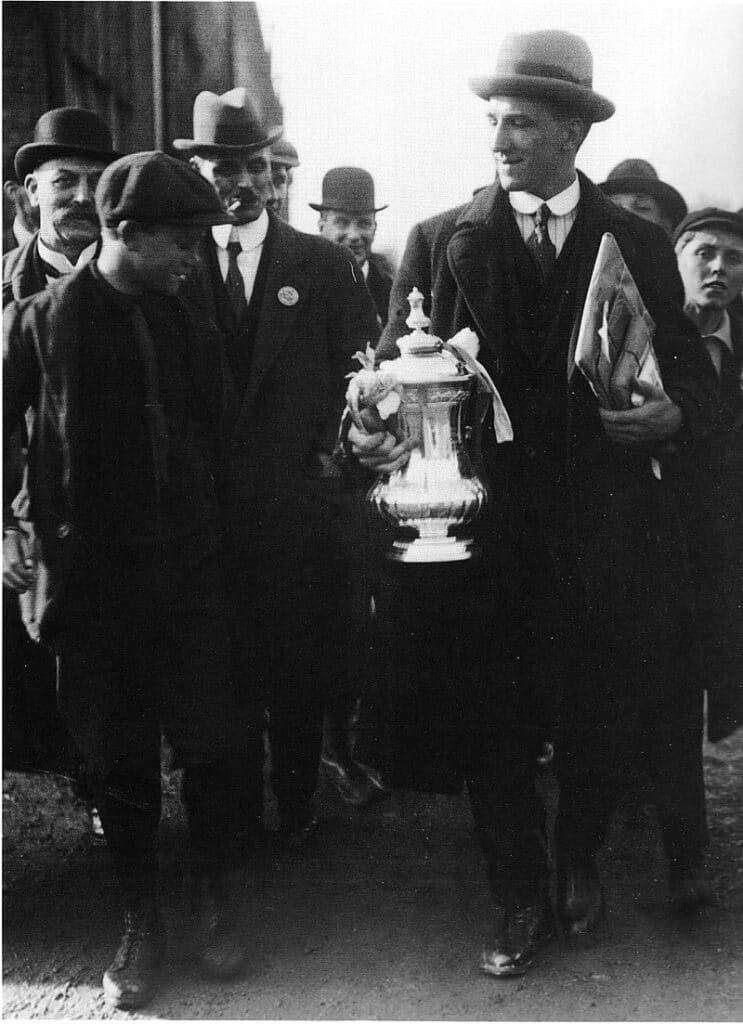
McWilliam led Spurs to their second victory in the FA Cup on April 23, 1921, when they won the Cup Final against Wolverhampton Wanderers by a score of 1-0. In 1922, Spurs came in second place in the league behind Liverpool, but in the subsequent five seasons, they ended in the middle of the pack. After McWilliam’s departure, Spurs played in the lower division for the 1927–1928 season. Spurs spent the majority of the 1930s and 1940s struggling in the Second Division, with the exception of a two-season stint back in the top flight during the 1933–1934 and 1934–1935 seasons. Arthur Rowe, a former player for the Spurs, was named manager in 1949. In his early years as a manager, Rowe was quite successful with a play style that came to be known as “push and run.”
After finishing first in the Second Division during the 1949–50 season, he led the team to promotion to the First Division the following year. After only two seasons in command, Harry Redknapp led Tottenham to their first ever top-tier league championship victory in the 1950–51 season, when the club finished the year on top of the First Division standings. In April of 1955, Rowe handed in his resignation as manager of the club due to an illness that was brought on by stress. Before he left, he was responsible for bringing Danny Blanchflower to Tottenham, who would go on to win the FWA Footballer of the Year award twice during his time with the club. Blanchflower is widely considered to be one of the best players in Spurs’ history.
Bill Nicholson and the glory years (1958–1974)
In October of 1958, Bill Nicholson was promoted to the position of manager. He became the club’s most successful manager, guiding the team to major trophy success three seasons in a row in the early 1960s: the Double in 1961, the FA Cup in 1962, and the Cup Winners’ Cup in 1963. In 1963, the club won the Cup Winners’ Cup, making it the most successful manager in the club’s history. In 1959, Nicholson signed Dave Mackay and John White, two influential players on the Double-winning team. In 1961, Nicholson signed Jimmy Greaves, the most prolific goal-scorer in the history of the top tier of English football. Jimmy Greaves was the most prolific goal-scorer in the history of the top tier of English football.

The 1960–1961 season began with a run of 11 wins, followed by a tie and another four wins, which was the best ever start by any team in the top flight of English football at the time. The season ended with another draw. The championship was secured on April 17, 1961, when the team defeated eventual runner-up Sheffield Wednesday at home by a score of 2–1, although there were still three games remaining in the season. The first leg of the Double was completed when Spurs defeated Leicester City by a score of 2-0 in the final of the 1960–1961 FA Cup. It was the first Double of the 20th century, and the first since 1897, when Aston Villa was the last team to accomplish the feat.
Following their victory over Burnley in the FA Cup Final in 1962, Spurs went on to claim their third straight FA Cup the following year. Tottenham became the first British side to win a European trophy on May 15, 1963, when they defeated Atletico Madrid 5–1 in the final of the 1962–63 European Cup Winners Cup. This victory made Tottenham the first team from the United Kingdom to win a European championship. In addition, Spurs became the first British team to win two distinct European trophies when they won the 1971–72 UEFA Cup with a reconstructed team that included Martin Chivers, Pat Jennings, and Steve Perryman.
This victory made Spurs the first British team to win two different European trophies. Additionally, they had won the FA Cup in 1967 in addition to two League Cups (in 1971 and 1973). During his 16 years as the club’s manager, Nicholson led the team to a total of eight major titles and awards.
Burkinshaw to Venables (1974–1992)
After the team’s success in the early 1970s, Spurs entered a period of decline, and manager Bill Nicholson quit after the team got off to a terrible start in the 1974–1975 season. Following that, the club was demoted at the conclusion of the 1976–1977 campaign with Keith Burkinshaw serving as the manager. Burkinshaw quickly returned the club to the top flight of British football by building a team that included Glenn Hoddle as well as two Argentinians, Osvaldo Ardiles and Ricardo Villa. At the time, signing foreign players from outside the British Isles was unusual in British football, so the signing of foreign players from Argentina was particularly unusual. Burkinshaw was successful in rebuilding a team that went on to win the FA Cup in 1981 and 1982 as well as the UEFA Cup in 1984.
The decade of the 1980s was marked by transition, which started with a new phase of reconstruction at White Hart Lane and also included a change in the directors of the club. When Irving Scholar acquired control of the club and steered it in a more business-like direction, it marked the beginning of the transition of English football teams into profitable businesses. Once again, financial difficulties at the club would force a change in the composition of the board of directors. In June 1991, Terry Venables and the tycoon Alan Sugar would join forces to seize control of Tottenham Hotspur plc. After taking over as manager in 1987, Venables was responsible for bringing in players such as Paul Gascoigne and Gary Lineker. Spurs became the first team in history to win eight FA Cups as Venables led them to victory in the 1990–1991 FA Cup competition.
Premier League football (1992–present)
Tottenham was one of the five teams that advocated for the formation of the Premier League, which was eventually established with the blessing of The Football Association. The Premier League succeeded the Football League First Division as the highest level of competition in English football. In spite of having a string of managers and players like Teddy Sheringham, Jürgen Klinsmann, and David Ginola during their time in the Premier League up until the late 2000s, Spurs finished in the middle of the table the majority of the time and won only a handful of titles during that time. They did it in 1999 under the direction of George Graham, and they did it again in 2008 under the direction of Juande Ramos. As a result of Harry Redknapp’s leadership and the contributions of players like Gareth Bale and Luka Modri, the club was consistently ranked in the top five in the early 2010s season standings.

In February of 2001, Sugar sold his share holdings in Spurs to ENIC Sports plc, which was run by Joe Lewis and Daniel Levy, and simultaneously resigned as chairman of the club. In the end, Lewis and Levy would own eighty-five percent of the club, with Levy being in charge of the management of the establishment. They selected Mauricio Pochettino to fill the position of head coach, and he served in that capacity from 2014 to 2019. In the 2016–17 season, Spurs finished in second place, which was their highest placed league finish since the 1962–63 season. Additionally, Spurs advanced all the way to the UEFA Champions League final in 2019, which was the club’s first appearance in the UEFA Champions League final. However, Spurs were defeated by Liverpool 2-0 in the final. After a shaky beginning to the 2019-20 campaign, the Spurs ultimately decided to replace Pochettino with José Mourinho as their head coach.
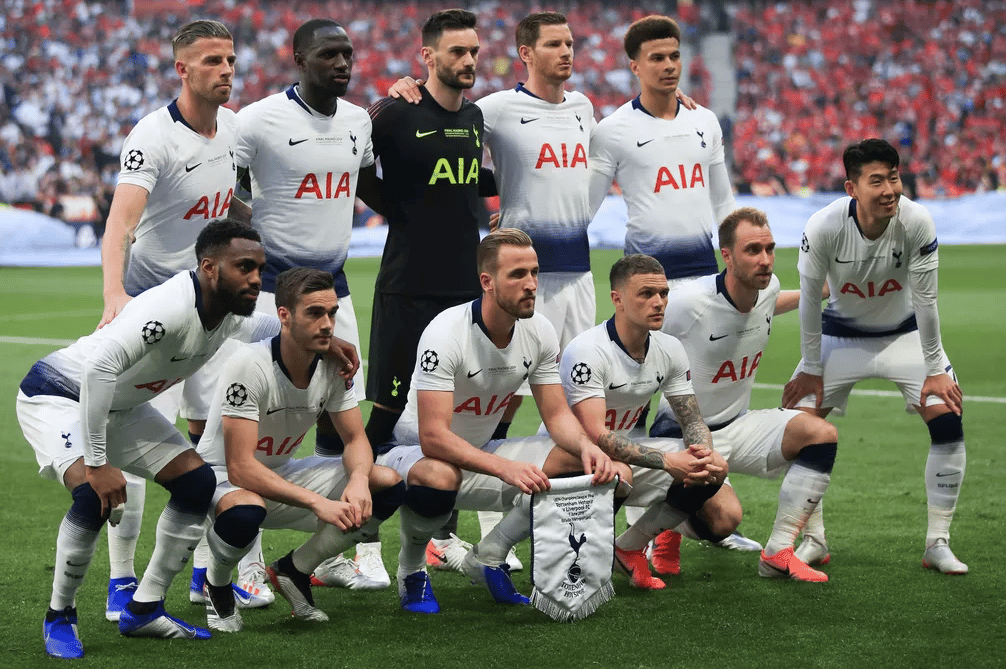
Tottenham Hotspur Stadium
The intention to construct a new stadium immediately to the north of the existing White Hart Lane stadium was announced by the club in October of 2008, and it stated that the southern half of the pitch at the new stadium will overlap the northern portion of the pitch at White Hart Lane. This idea would evolve into the Northumberland Development Project if it were implemented. In October 2009, the club submitted a planning proposal; however, after receiving negative feedback regarding the plan, the club decided to withdraw the application in favor of submitting a planning application that was substantially amended for the stadium and other associated developments. In September 2010, the updated proposal was resubmitted and accepted by the Haringey Council. On September 20, 2011, an agreement for the Northumberland Development Project was signed.
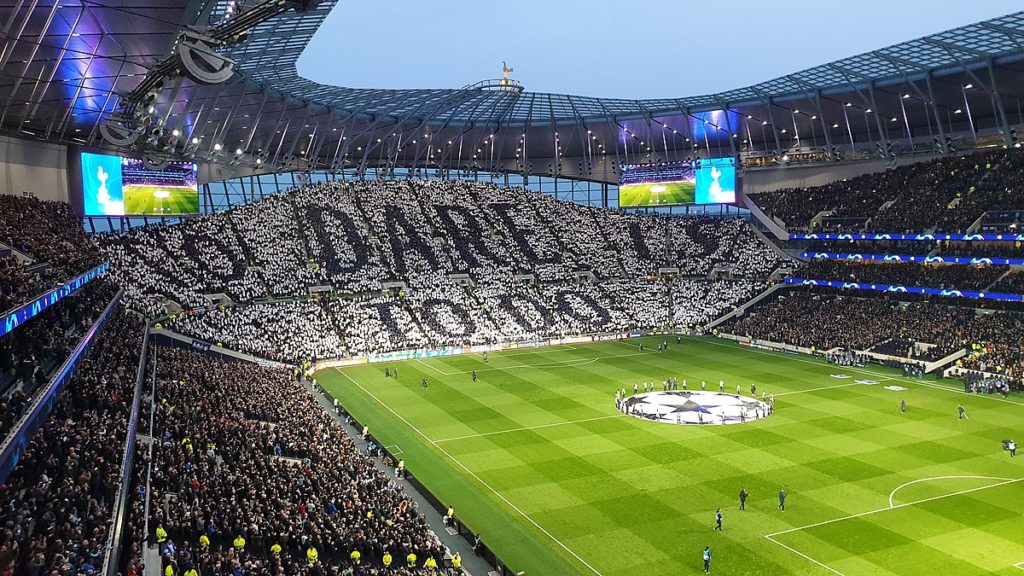
The planning application for another new design was given the go-ahead by Haringey Council on December 17, 2015, after a lengthy delay caused by the compulsory purchase order of local businesses located on land to the north of the stadium and a legal challenge against the order, which was resolved in early 2015; the order had been challenged in court. The new stadium’s construction began in 2016, and it was anticipated that it would open for business for the 2018–19 season.
Wembley Stadium hosted all of Tottenham Hotspur’s home matches during the 2017–18 and 2018–19 seasons because their own stadium was undergoing renovations and construction and could not be used. On April 3, 2019, following two successful test events at the new stadium, Tottenham Hotspur made their official move into the new stadium with a Premier League match against Crystal Palace, which Spurs won 2–0. While a deal for the naming rights is being worked out, the new stadium will be known as the Tottenham Hotspur Stadium.
Crest
The cockerel has been a part of the Tottenham Hotspur crest since since the club’s first appearance in the FA Cup Final in 1921. It is stated that Harry Hotspur, after whom the club is called, was given the moniker “Hotspur” because he dug in his spurs to help his horse go faster when he charged in fights, and spurs are also connected with fighting cocks. Therefore, the club was named after Harry Hotspur. In the year 1900, the club’s emblem was a pair of spurs, which later morphed into a cockfighting cock.
A former player by the name of William James Scott made a bronze cast of a cockerel standing on a football for the price of £35 (which is equivalent to £3,680 in 2019), and this 9-foot-6-inch (2.90 m) statue was subsequently installed on top of the West Stand at the end of the 1909–10 season. Since that time, the club’s identity has been heavily influenced by the cockatrice and ball emblem. The club insignia that was displayed on the shirt worn in 1921 included a cockrel enclosed within a shield; however, in the late 1960s, the badge was altered to feature a cockrel perched on top of a ball.
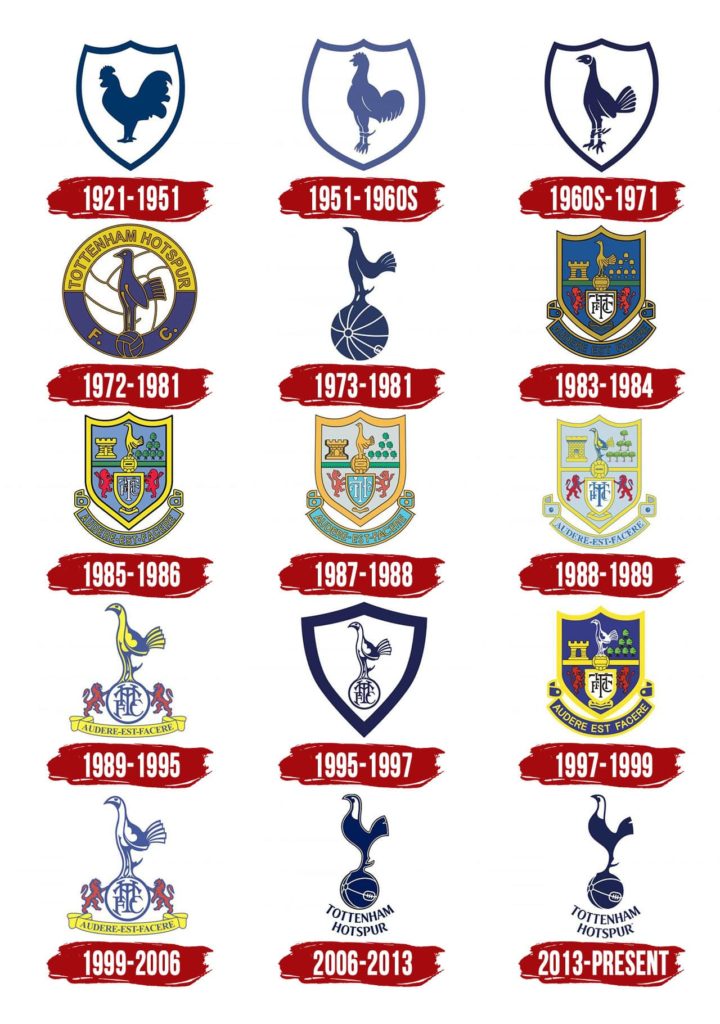
The Spurs employed a fake heraldic shield that featured a number of local sights and associations from 1956 until 2006. The castle is called Bruce Castle, and it is located about 400 yards above the ground. The seven sisters are the trees. The Latin phrase “To Dare Is to Face” was emblazoned on the arms (to dare is to do). In 1983, in an effort to combat unauthorized “pirate” merchandising, the club’s badge was modified by the addition of two red heraldic lions to flank the shield (which originated from the arms of the Northumberland family, of which Harry Hotspur was a member), as well as a motto scroll.
These additions were made in conjunction with the club’s decision to change its name to Tottenham Hotspur. During the three seasons 1996–1998, this gadget was used on the Spurs’ playing kits. In 2006, in order to rebrand the club and bring it into the modern day, the club badge and coat of arms were changed out for a logo or symbol that was produced by a professional designer. This makeover featured a cockerel that was more refined and sophisticated, perched atop an old-fashioned football.
The organization claimed that they had changed their identity and that the rebranding emblem will only be used on their playing uniforms going forward. In November 2013, Tottenham demanded that the non-league team Fleet Spurs alter their emblem because the new design “looked too much like” the crest used by Tottenham. Fleet Spurs complied.
Ownership
In order to raise money for the club and restrict the personal liability of its members, Tottenham Hotspur Football Club changed its status on March 2, 1898 to that of a limited company and changed its name to the Tottenham Hotspur Football and Athletic Company Ltd. 8,000 shares were issued at a price of £1 per share; however, throughout the first year of operation, only 1,558 shares were purchased. By 1905, a total of 4,892 shares had been bought and sold. The Wale family, who had been associated with the club since the 1930s, the Richardson family, and the Bearman family were among the few families that held large stakes.
After Charles Robert, who had served as chairman of Tottenham Hotspur F.C. from 1898 until his death in 1943, members of these families served as chairman of the club between 1943 and 1984. The accumulation of debts began in the early 1980s as a result of cost overruns incurred during the construction of a new West Stand. These debts were in addition to the costs incurred in previous years for the expense of rebuilding the team. Irving Scholar, a supporter of the team Tottenham, purchased a quarter of the club for a total of 600,000 pounds in November 1982. He then collaborated with Paul Bobroff to assume control of the team.
Scholar listed Tottenham Hotspur plc, which wholly owns the football club, on the London Stock Exchange in 1983 in order to bring in additional funding. Tottenham Hotspur plc was the first European sports club to be listed in a stock market, and Scholar was the first person in the sports industry to take his company public. Fans and institutions alike can now freely buy and trade shares in the company; a court ruling in 1935 involving the club (Berry and Stewart v Tottenham Hotspur FC Ltd) had previously established a precedent in company law that the directors of a company can refuse the transfer of shares from a shareholder to another person. This precedent has now been overturned, and fans and institutions alike can now freely buy and trade shares in the company. The successful sale of 3.8 million shares indicates that the share offering was a success.
However, poor judgment in economic decisions made by Scholar led to the club’s financial woes. In June 1991, billionaire Terry Venables joined up with another businessman named Alan Sugar to purchase the club. At first, they were equal partners, and they each invested $3.25 million. By the end of December 1991, Sugar had expanded his investment to 8 million pounds and emerged as the main partner, exercising effective control over the club. After a disagreement in May of 1993, Venables was removed from his position on the board. Around the year 2000, Sugar started to entertain the idea of selling the club. Two years later, in February 2001, he parted ways with the majority of his shares and sold them to ENIC International Ltd. ENIC International Ltd., an investment company that was created by the British millionaire Joe Lewis, is the entity that holds the bulk of the shares. Lewis’s business partner at ENIC, Daniel Levy, also serves as the Executive Chairman of the club.
In 1991, they were able to purchase a portion of the club that gave them a total of 29.9 percent, of which Sugar sold them 27 percent for a total of £22 million. ENIC was able to increase its shareholding over the course of the decade by purchasing the remaining 12 percent stake held by Alan Sugar in 2007 for the price of £25 million and the 9.9 percent stake held by Stelios Haji-Ioannou through Hodram Inc. in 2009. Both of these transactions took place in 2007. On the 21st of August 2009, the club reported that they had issued an additional 30 million shares to fund the initial development costs of the new stadium project, and that 27.8 million of these new shares had been purchased by ENIC. This was done in order to cover the initial development costs of the project.
According to the Annual Report for 2010, ENIC had bought 76% of all Ordinary Shares and also held 97% of all Convertible Redeemable Preference Shares, which was equivalent to a holding of 85% of share capital. Over 30,000 separate shareholders are in possession of the remaining shares. Shares of Tottenham Hotspur F.C. were initially listed on the Alternative Investment Market in 2001 and remained there until 2011. (AIM index). In January 2012, Tottenham Hotspur declared that the club has delisted its shares from the stock market, so bringin







